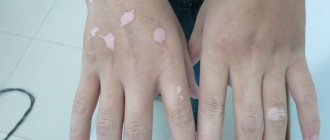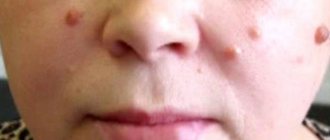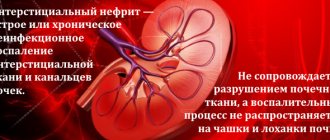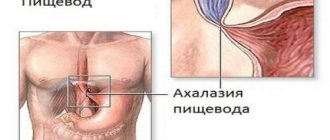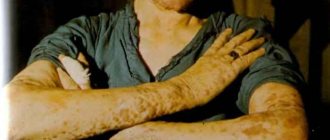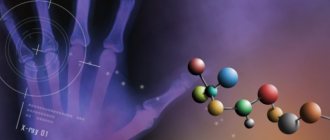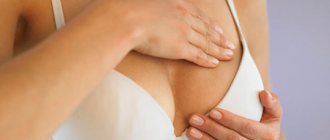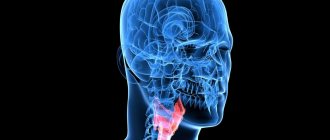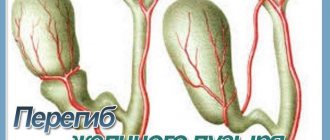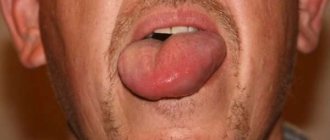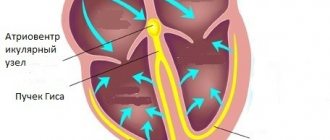Acne on the face can be presented as a separate disease, but in the vast majority of cases, the occurrence of acne or pimples is a clinical manifestation of a particular disease.
- Etiology
- Classification
- Symptoms
- Diagnostics
- Treatment
- Prevention
Most often, this symptom occurs against the background of hormonal, endocrine and gastroenterological disorders. However, there are quite a large number of other predisposing factors that do not have a pathological basis.
As for additional symptoms, they will differ depending on what disorder was the source of such a symptom. Differences will also be observed in the appearance of the acne.
Diagnosing acne on the face is not difficult for an experienced dermatologist, but identifying a predisposing factor will require a whole range of diagnostic measures.
In the treatment of facial acne, conservative and minimally invasive techniques, as well as traditional medicine, predominate. Surgical procedures are not used to eliminate the symptom.
What is acne
Acne (blackheads, acne) is a chronic lesion of the sebaceous glands, which is characterized by their inflammation and blockage with sebum. The abnormal phenomenon is most often observed on the face, back and chest. Less commonly, pathology occurs on the arms, legs and abdomen. The disease is especially common in adolescents, which is associated with improper skin care and hormonal changes in the body.
Acne is not only a cosmetic defect that causes complexities, discomfort and embarrassment, but can also provoke the development of other, more complex diseases. This happens as a result of infection of the inflamed gland and the entry of pathogenic microorganisms into it, which provokes the process of decay.
Symptoms of acne during the period of relief of the disease
During this period, acne covers almost the entire surface of problem areas. They are joined by pustules, cysts and nodes. The inflammatory process is quite extensive; as a result of deep penetration of the infection, scar formation is observed, which is difficult to treat.
The situation is quite serious and requires adequate treatment. It is forbidden to self-medicate or wait until the pathological symptoms disappear on their own.
Therapy for this form of acne should be carried out in a complex manner, it should include:
- taking medications,
- careful adherence to personal hygiene rules,
- refusal to use cosmetics and creams,
- laser therapy aimed at eliminating cosmetic defects.
Causes of acne
The reasons that provoke the appearance of acne can be divided into several groups: provoked by changes in hormonal levels, gastrointestinal diseases and improper hygiene. Only a dermatologist can determine exactly the factors that led to the appearance of acne, who will determine the etiology of the disease and select the most effective treatment.
Often the occurrence of acne provokes disruption of the gastrointestinal tract. The most common diseases include: dysbacteriosis, gastritis in acute chronic form, liver and kidney diseases. Acne can also be caused by poor diet, in particular, high consumption of sugar, coffee, carbonated drinks and fatty foods.
Stress and strong emotional experiences (including depression) can cause acne. Such pathological conditions disrupt the functioning of the endocrine glands, which provokes excessive production of sebum and blockage of the ducts.
Hereditary predisposition also plays an important role, on which the quality of the sebaceous glands depends. As a rule, this factor causes the development of the disease in representatives of the stronger sex.
Another common cause of acne is poor hygiene, complete neglect and excessive care of the skin. Acne often results from the use of inappropriate products or cosmetics that have a comedogenic effect (oils, foundation, powder that clog the sebaceous glands). In addition, excessive exposure to ultraviolet rays on the epidermis can trigger acne.
Hormonal causes of acne are the most common and are associated with the functioning of the endocrine and reproductive systems. Any deviations in their work provoke increased secretion of sebum, cause blockage of the glands, which leads to the appearance of tumors on the skin.
Such disorders are typical of adolescents, whose hormonal levels often and dramatically change. In older age, pathology develops during pregnancy and on certain days of the menstrual cycle in women. In men, acne can occur as a result of taking steroid hormones to increase muscle mass and form high-quality muscles.
Depending on the location of acne, the cause of the disease can be determined:
- Neoplasms on the back most often occur in men as a result of an excess of steroid hormones (androgen, testosterone).
- Acne on the nose and cheeks indicates diseases of the gastrointestinal tract.
- Acne on the forehead indicates a disruption of the intestines (most often dysbacteriosis and constipation).
- Pimples on the chin indicate the presence of gynecological diseases (erosion, adnexitis, ovarian dysfunction). In addition, such rashes may indicate diseases of the tonsils.
The most popular remedies for getting rid of acne
Not all acne can be cured quickly. Despite the fact that numerous advertisements for cleansing lotions claim that acne will get rid of acne quickly and completely, in reality this almost never happens. For example, teenage acne is often so abundant that treatment only makes it less noticeable - it finally disappears only after adolescence and hormonal changes are completed.
Nevertheless, it is worth fighting acne in any case. Even a slight improvement will still have a positive effect on the condition of the skin, and you will like your own reflection in the mirror much more. There are quite a few proven remedies - let’s look at each of them and briefly talk about the action of the drugs.
Eliminal gel
Eliminal gel is a drug whose main active ingredients are silicon dioxide and lactulose. This product is taken orally - Eliminal gel is a suspension packaged in small sachets.
The product helps remove toxins from the body, quickly cleanse and normalize metabolic processes. The suspension can be used by both children and adults - but in different dosages indicated in the instructions. As a rule, this remedy has a good effect if acne is caused precisely by malfunctions in the intestines - after the original source of the problem is eliminated, the skin also quickly returns to normal. The drug is taken in courses - over 10 - 12 days, 2 - 3 times a day, depending on age. However, the list of contraindications for use includes gastric or duodenal ulcers in the acute stage.
Lactofiltrum
Lactofiltrum is another popular sorbent product used for acne caused by problems with the gastrointestinal tract. The drug also contains lactulose and the substance lingin. Combined together, the two components bind and absorb waste and toxins, remove them out and thus cleanse the intestines, helping to normalize its functioning.
Lactofiltrum is a powder packaged in dosage sachets - before use, the drug must be diluted in warm water to a liquid suspension. The drug is taken in courses - over two to three weeks. Lactofiltrum is completely harmless, but longer use of the drug can lead to the removal of useful substances from the body. In addition, the use of the drug is not recommended for acute ulcerative exacerbations, intestinal obstruction and other severe conditions.
Tar soap for acne
You can fight acne not only from the inside, but also from the outside. And the simplest and most reliable remedy is ordinary tar soap, which has been actively used for many generations. Unlike most hygiene products, tar soap does not contain any aromatic additives and contains 10% completely natural birch tar - an excellent natural antiseptic.
Diagnosis of the disease
A dermatologist can determine the cause and nature of the tumors after a thorough examination. First of all, the doctor examines the neoplasms, determines their degree, nature and assesses the damage to the skin. To establish the cause, laboratory tests and instrumental studies are carried out: a general blood test, a blood test for hormones, an examination of the digestive system and a smear taken from an opened pustule to identify the presence of an infectious agent, if an inflammatory process is observed.
Clinical picture of acne at its peak
The height stage is characterized by the active formation of papules and comedones, their number can range from 10 to 25. In parallel with this, the appearance of pustules is observed. The skin around the elements of the rash is inflamed, as a result of which its color changes, it becomes bluish-pink. All this provokes the appearance of uncomfortable sensations, especially aesthetic ones.
The second stage requires consultation with a dermatologist, because to get rid of the problem, you will need complex treatment.
Acne treatment
The treatment of the disease should be chosen by a dermatologist after determining the cause of the pathology. First of all, the doctor determines the degree of the disease, its etiology and the general condition of the patient’s skin.
In medicine, there are three stages of acne:
- Mild - closed acne is observed on the skin, and there is no inflammation in it. As a rule, there are no more than ten such formations on the face.
- Medium degree - the number of rashes on the face is in the range of 10-40.
- Severe stage - the rashes become inflamed and purulent, and their number exceeds 40.
For mild treatment, external methods are used: creams, ointments and gels, which contain active substances that prevent the appearance of comedones in the future and destroy existing formations. In addition, such products reduce sebum production. These medications include: Skinoren, Retin-A, Airol Roche, OXY10, etc.
For moderate severity of the disease, medications are prescribed to eliminate the causes of the pathology. Additionally, external means are used. If the cause of the disease is hormonal disorders, it is recommended to take medications that regulate hormone levels.
The most common groups of medications include:
- Benzoyl peroxide – has a whitening and keratolytic effect, helps remove pigmentation after acne removal. Additionally, the drug has an antibacterial and anti-inflammatory effect.
- Azelaic acid allows you to quickly and effectively remove acne.
- Trethionine – eliminates acne and helps prevent the appearance of new tumors. In addition, the drug reduces the amount of sebum synthesized.
- Antibiotics – Erythromycin, Clindamycin, drugs of the tetracycline group. Suppress the development of bacterial infection and promote rapid recovery.
Masks and peelings are used to cleanse the facial skin. Such procedures remove the top layer of the epidermis and free the sebaceous ducts. A light pinch massage will help improve the outflow of lymph and sebaceous fat. In some cases, laser therapy is performed, which can only be used on non-inflamed acne. In particularly difficult situations, surgical procedures are performed. During the operation, the cavity is opened and cleaned of pus.
Acne responds well to treatment if you follow all the recommendations of doctors:
- Avoid foods that cause acne.
- Carry out all necessary hygiene procedures regularly.
- Take all prescribed medications.
Is it possible to squeeze pimples?
Pimples always appear on the face at the most inopportune moment. And the first impulse of any person is to simply squeeze out the acne. However, doctors and cosmetologists categorically do not recommend doing this.
- Firstly, a new infection can enter the inflamed pores through the resulting wound - and then the redness will only intensify.
- Secondly, squeezing pimples often leads to scars remaining on the skin - and it is almost impossible to get rid of them later.
- And thirdly, with inaccurate pressure, you can damage tissues and lymph nodes, which will lead to severe inflammation, new acne and a general deterioration in the condition of the skin.
Even if acne appears very inopportunely, it is better to wait until the pimple goes away on its own, under the influence of medicinal ointments and tablets.
Preventing acne
To avoid the development of acne, you must follow simple preventive measures:
Carefully observe the rules of hygiene, use suitable cosmetics and avoid prolonged exposure to ultraviolet rays.- Promptly treat gastrointestinal diseases, especially dysbiosis that occurs after taking antibiotics.
- Control the level of hormones (sex and endocrine).
If the first acne occurs, you should consult a dermatologist to determine the cause of the disease and begin timely treatment.
